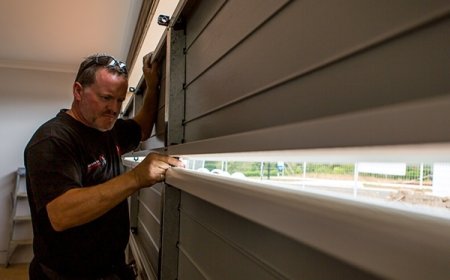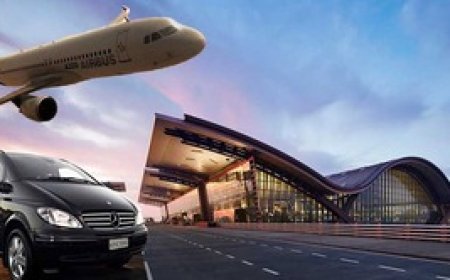Charter Flights Dubai to Maldives: Powered by International CAMO Support

The charter aviation market in the Middle East is on a path of transformation, shaped by shifting expectations, stricter regulations, and rising demand for flawless private traveling. One of the most demanded routes from Dubai to the Maldives is not only an artery between urban sophisticate and barefoot luxury; it also captures the amount of coordination, technical supervision, and client-oriented efficiencies that the foremost charter providers are endowed with in the region.
Theoretically, the client-side end of the experience feels utterly smooth and spontaneous, yet the very backbone of such a flight is however not simple. A myriad of cross-border compliance requirements intermeshed with rigorous aircraft maintenance is methodically taken care of, often without the client consciously keeping track of it.
A Route Defined by Efficiency and Expectation
Dubai has evolved into a hub for private aviation in the GCC, thanks to its strategic location, premium infrastructure, and access to high-net-worth travellers. The Maldives, in parallel, has carved out a reputation as a sanctuary for those seeking remote, world-class hospitality. As a result, the charter flight from Dubai to Maldives has become a benchmark for luxury travel in the region.
However, this route also brings logistical challenges. It involves international airspace, customs coordination, and rapid turnaround expectations especially when clients demand flexibility. The aircraft must be available, ready, and compliant. In practice, this means that providers cannot rely on aesthetics or comfort alone; operational resilience and legal readiness are equally non-negotiable.
Behind the Scenes: Structure That Supports Simplicity
Every charter flight operates within a matrix of responsibilities from scheduling to airworthiness, ground handling to crew management. Operators serving premium routes like DubaiMaldives must ensure their aircraft not only meet visual standards but also adhere to technical benchmarks that vary by region and aircraft type.
Flight preparation, for instance, includes calculating fuel loads, aligning crew duty hours with international guidelines, and ensuring documentation is synchronised between departure and arrival jurisdictions. Maintenance teams must account for tropical landing conditions, sea-level humidity, and turnaround constraints that may differ from typical European or GCC routes.
Balancing Agility with Safety
A key challenge in private aviation is responding to last-minute client changes without compromising on regulation or quality. The need for operational agility adjusting departure windows, extending stays, or swapping aircraft must be balanced with detailed technical oversight.
While some of this responsibility falls to fleet operations teams and pilots, much of it depends on systems in place before the journey even begins. These systems allow aircraft to move across jurisdictions, maintain continuity in servicing, and remain available on-demand. High-performing charter providers build redundancy into their fleet scheduling, so no single disruption compromises service delivery.
The Strategic Role of Maintenance and Compliance
Aircraft readiness is not just a box-ticking exercise; it determines the provider's ability to deliver a consistent client experience. Downtime, delays, or unresolved maintenance issues risk more than reputation; they interfere with safety, trust, and long-term brand credibility.
This is where the framework of international CAMO support becomes important. CAMO Continuing Airworthiness Management Organisation ensures that aircraft undergo systematic inspections, are compliant with the latest directives, and remain ready for deployment. But in the broader picture, its just one part of a much larger infrastructure, one that includes pilot rosters, regulatory audits, international insurance policies, and third-party airport relationships.
For routes like Dubai to Maldives, where flights may be frequent and expectations high, this integrated system is what enables operators to function at a global standard.
Client Expectations and Operational Realities
Todays charter client expects more than just a premium aircraft they expect certainty. They want guaranteed departure times, reliable ground transportation, smooth customs processes, and a crew thats briefed and prepared. Meeting these expectations is less about reactive service and more about predictive systems.
Thats why top-tier aviation providers operate with a mindset closer to that of an airline, not just a boutique charter operator. They forecast demand, maintain a scalable fleet, and build partnerships across borders. With aircraft often based in Dubai but operating on-demand across the region, including in South Asia and the Indian Ocean, flexibility is key but never at the expense of control.
Regional Growth and New Standards in Private Aviation
The DubaiMaldives corridor is just one example of how private aviation is being reshaped by cross-border travel, seasonal demand, and growing awareness of international standards. As the Gulf and South Asia become more interconnected, expectations around aviation service are also converging, blending luxury with accountability.
From clients booking their first charter to seasoned executives flying monthly, there's a growing awareness of what professionalism in private aviation looks like. Its not just about champagne onboard or leather seats, it's about aircraft availability, regulatory compliance, and a seamless transition from tarmac to resort.
Conclusion
The luxury of private air travel relies on complexity but that complexity must remain invisible to the client. The Dubai to Maldives charter route captures this perfectly: a flight that appears effortless on the surface, but in reality, is supported by intricate systems, skilled teams, and technical compliance that spans multiple jurisdictions.
Whether its through airworthiness support, smart scheduling, or reliable ground coordination, the leading charter operators in the region arent just moving aircraft theyre managing trust. And in a market as discerning as private aviation, that trust is built one smooth journey at a time.










































